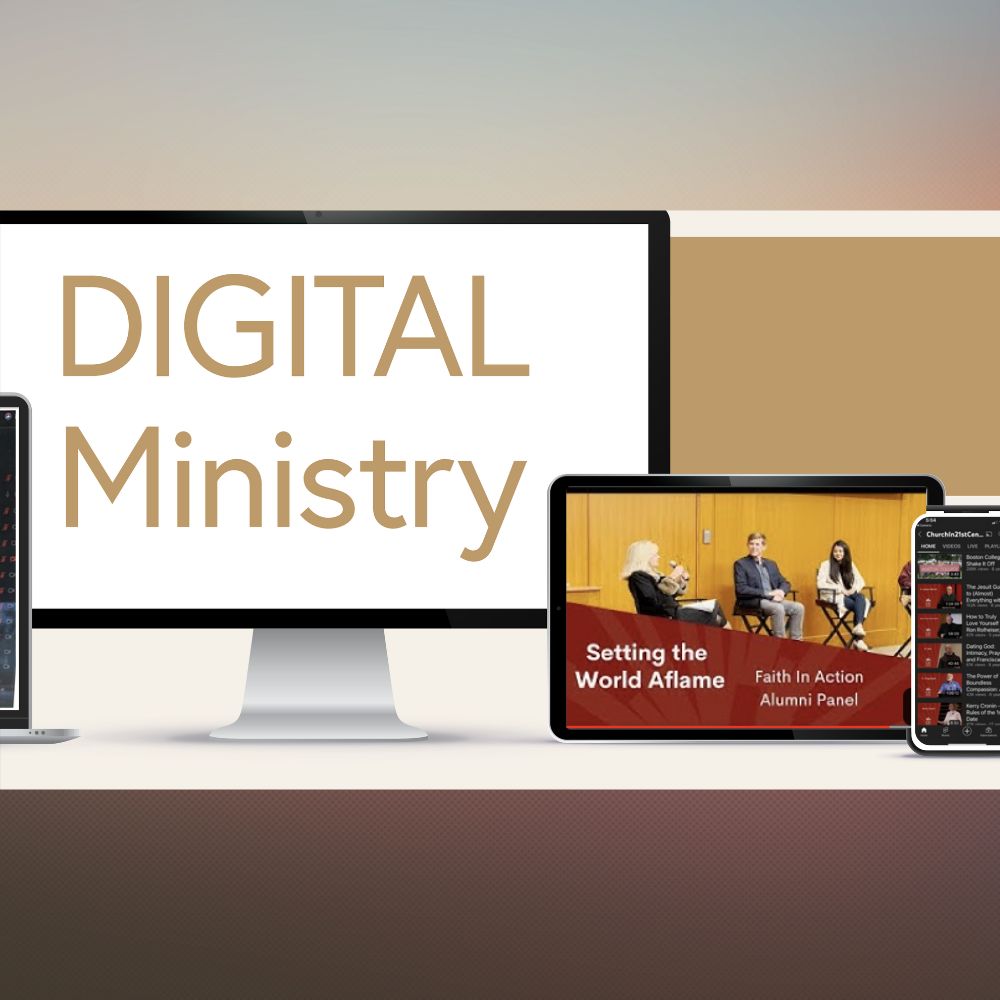In this “new” world, where so much of our spiritual lives had to move online, we’ve been powerfully reminded how much we need one another and how significant it is to gather in person. But many parish ministries are not just surviving through this medium, they’re thriving. In fact, people of all ages are participating in digital faith sharing, and real community is formed in these digital spaces.
One might be inclined to prioritize either digital media or in-person gatherings. Instead, leaders should explore best practices for integrating digital communities into our physical realities one ministry at a time. While there is no universal, one-size-fits-all solution, these four best practices can help integrate the digital and traditional aspects of your faith community.
BE WITH YOUR PEOPLE
Good parish communication starts with a question: “Where is the best place to reach you?” For some groups, that might mean age-old, tried-and-true communication methods—the parish bulletin, a poster in the church hall, or an email newsletter. Other groups might needsomething more sophisticated such as a WhatsApp or Facebook group or a digital content management space like Trello or Slack. It depends on with whom you’re trying to communicate, how often you’re trying to communicate, and how engaged you’d like them to be. Go to where people are and communicate there.
After understanding what media work best for your community, it’s important to define your goals. Are you trying to invite the entire parish to a particular event or ministry? Are you trying to reach people who aren’t in the pews? Or are you simply trying to share an update with your group? Too often, parishes try to do all of their communication on just one platform. In these days of digital connectivity, that doesn’t work. You have to know the ins and outs of your audience before you can do anything else.
BE CONSISTENT
Using a platform that is foreign to you can be challenging, but communicating consistently covers a multitude of ills. Even before the pandemic, parishioners accustomed to on-demand information were rigorous in their quests to find answers to questions. Your parish can best serve those parishioners by establishing an explicit standard of communication. Create a culture that emphasizes quick and concise responses and clearly outline how often people can expect to hear from you. For instance, if a parish youth group primarily communicates through WhatsApp, youth ministers should set intervals at which participants can expect updates. If you’re a pastor, set aside one day each week to issue a video or column on social media so people know when they can expect to see an update from you.
Never let the lines of communication go dead, especially if your chosen method is digital. Be available if someone has a question. If people see others asking questions and getting responses, they will feel more comfortable asking you what is on their hearts.
Communication is about community, and the digital tools at our disposal allow us to cultivate communities, whether it’s the parish as a whole, ministries, or leadership.
BE PRESENT
Communication is first a ministry of presence. Sometimes people don’t want or need resources. Sometimes they don’t want to be hassled with asks about events or donations. Sometimes communicating in your parish is simply about being there for people in their times of need. For instance, a bereavement ministry might find that a private Facebook group is the best way for its members to communicate and gather.
While it’s important to share updates about meeting times and prayer requests, your ministry will bear more fruit if you focus on creating space for people to gather that is safe and welcoming, where people can interact without judgment, and where people can grow with one another. Social media, when used properly, can be a wonderful and dialogical space for ministries of accompaniment.
BE ENGAGING
The digital age has radically redefined communication at every level, flooding the market with content of all kinds. To cut through the noise, you have to create engaging and original content on whatever medium you select. If social media is your chosen avenue to interact with the parish at large, quality video content is a must. If you want to effectively communicate in digital groups on Facebook, WhatsApp, or similar sites, beautiful graphics will draw people’s attention when they scroll through their feeds.
It’s not enough to just create good content. Any parish communicator is at their most effective when they ask questions, invite feedback, and encourage sharing from their parishioners and group members. “Being engaging” can be as simple as asking for feedback via Google forms after an event or asking a question on social media. Digital media certainly makes our world noisy, but it also gives us the unprecedented ability to engage with and hear others.
Communication is about community, and the digital tools at our disposal allow us to cultivate communities, whether it’s the parish as a whole, ministries, or leadership. The actual platform or medium you use will differ from community to community. Working with digital tools can be overwhelming, but if you remember these best practices and keep your communication fixed on Jesus, you’ll communicatein this noisy, difficult world. After all, there is no message more engaging than the Gospel, nobody more present to us than Jesus, and no institution capable of communicating as effectively as the Church when we move forward with faith, transparency, and compassion.
John T. Grosso, BC ’14, is the director of digital media for the Diocese of Bridgeport, Connecticut.
This article was originally published in the August 2021 issue of U.S. Catholic (Vol. 86, No. 8) and is reprinted with permission (uscatholic.org).



